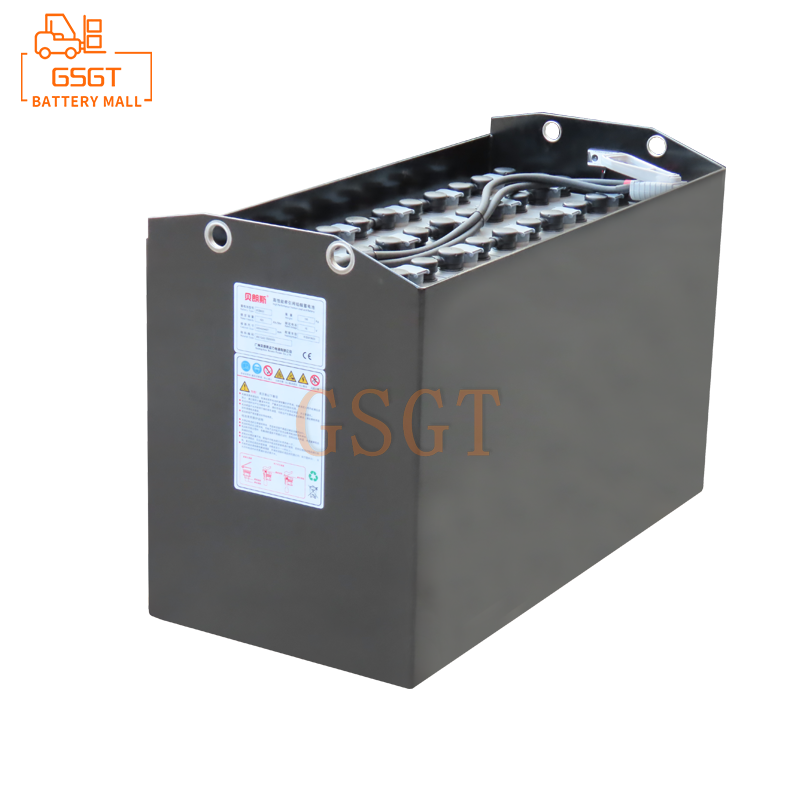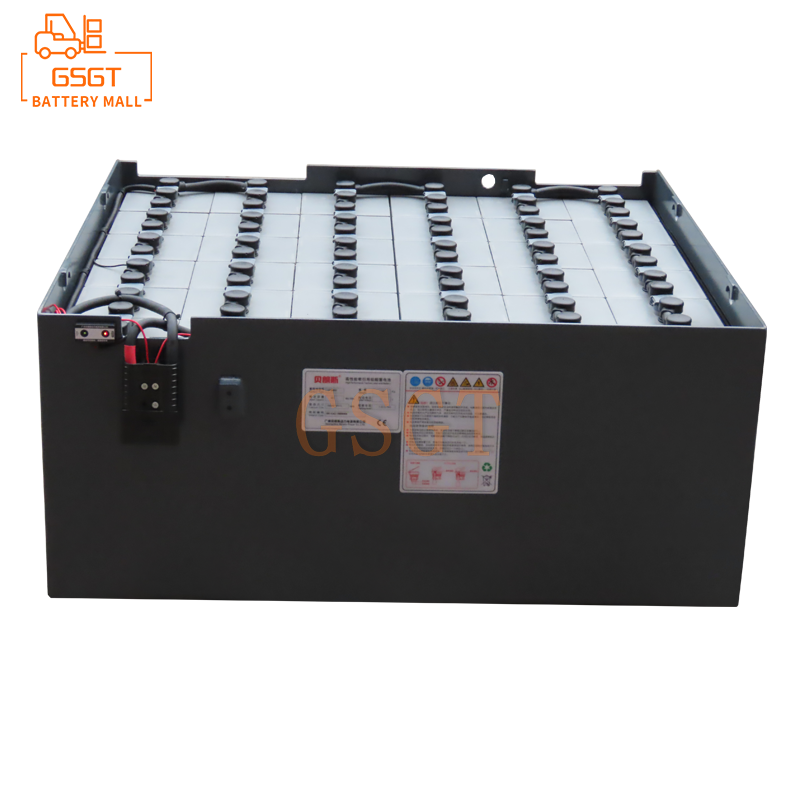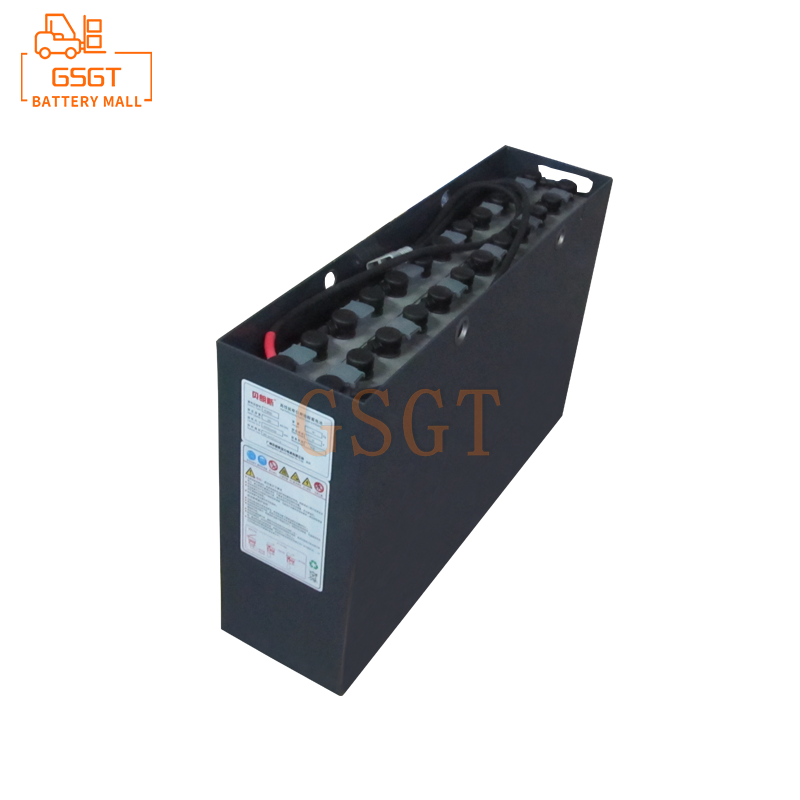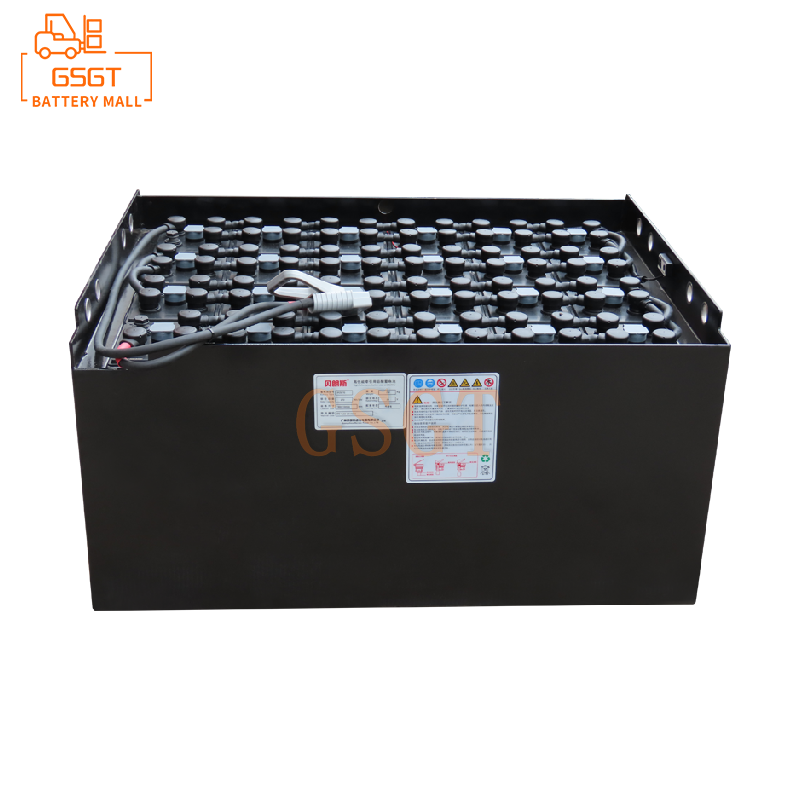Time:2025-04-30 10:58:05
Browse:632
Introduction
In modern logistics and industrial production, forklifts, as key material handling equipment, the selection of their power sources is of vital importance. Lead-acid batteries have occupied an important position in the field of forklift power due to their advantages such as low cost, mature technology and relatively high safety. However, different working scenarios and conditions have significant differences in the performance requirements for forklift lead-acid batteries. How to select the most suitable lead-acid battery based on specific working conditions to achieve efficient operation of forklifts and reduce operating costs is a practical problem faced by many enterprises. This article will deeply explore the best selection schemes for lead-acid batteries of forklifts under different working conditions, providing valuable references for enterprises.
The working principle and types of lead-acid batteries
Working principle
Lead-acid batteries achieve the mutual conversion of electrical energy and chemical energy through electrochemical reactions. Its main components include the positive plate, the negative plate and the electrolyte. During the discharge process, lead dioxide on the positive plate reacts with sulfuric acid in the electrolyte to form lead sulfate and water. Lead on the negative plate also reacts with sulfuric acid to produce lead sulfate. In this process, electron flow occurs, thereby outputting electrical energy. During charging, the process is reversed. An external power source provides electrical energy to reduce lead sulfate to lead dioxide and lead, the electrolyte concentration is restored, and the battery stores electrical energy again.
Type Introduction
Ordinary open-type lead-acid battery: This is the most traditional type of lead-acid battery. Its electrolyte is a dilute sulfuric acid solution. During use, due to reasons such as electrolyzing water, distilled water needs to be added regularly to replenish water loss, and the maintenance is relatively cumbersome. However, due to its simple structure and low cost, it still has a certain market in some forklift application scenarios where the requirements for maintenance conditions are not high and the usage frequency is low.
Valve-regulated sealed lead-acid batteries: Valve-regulated sealed lead-acid batteries are further divided into AGM and GEL types. AGM batteries use adsorption-type glass fiber cotton separators, which adsorb the electrolyte within the separators, ensuring no flowing electrolyte inside the battery and effectively preventing electrolyte leakage. At the same time, they have excellent high-rate discharge performance. GEL batteries mix electrolyte with colloid, making the electrolyte gel-like, which further enhances the battery's sealing performance and stability. They can still operate normally in harsh environments such as vibration and tilting, and have a low self-discharge rate, making them suitable for working conditions with high requirements for battery stability and maintenance.
Performance requirements for forklift lead-acid batteries under different working conditions
Working hours and intensity
Multi-shift continuous operation: For forklifts that need to operate continuously in multiple shifts, such as in large logistics warehouses, ports, and docks, the battery must have high capacity and long endurance to meet the requirements of long-term uninterrupted operation.
Intermittent short-term operation In some working conditions with low intensity, short operation time and intermittent characteristics, such as short-distance material transfer within small factories and replenishment in supermarket warehouses, forklifts do not need to work continuously for a long time. At this time, small-capacity lead-acid batteries can not only reduce the initial purchase cost, but also avoid resource waste caused by excessive battery capacity. Because small-capacity batteries can have a better service life even when the number of charge and discharge cycles is relatively small.
Working environment temperature
High-temperature environment: In high-temperature environments, such as steel mills, glass factories and other workshops, the temperature often exceeds 40℃ or even higher. At this point, the performance of lead-acid batteries will be significantly affected. High temperatures can accelerate the chemical reactions inside the battery, causing the electrolyte to evaporate more quickly and the battery to lose more water, which in turn affects the battery's capacity and lifespan. Therefore, in high-temperature environments, lead-acid batteries with high-temperature resistance should be given priority. For instance, products with special separator materials and electrolyte formulas can maintain good stability in high-temperature conditions and reduce maintenance frequency. At the same time, attention should be paid to the heat dissipation of the battery. This can be achieved by optimizing the ventilation design of the forklift battery compartment and other means to reduce the working temperature of the battery.
Low-temperature environments: Cold storage facilities, outdoor operations in cold regions, and other low-temperature environments also pose significant challenges to lead-acid batteries. Low temperatures will increase the viscosity of the battery electrolyte, slow down the diffusion rate of ions, resulting in an increase in the internal resistance of the battery and a significant decrease in capacity. Studies show that when the ambient temperature drops to -10 ℃, the capacity of lead-acid batteries may decrease to 60% - 70% of that at normal temperature. Under such working conditions, if lead-acid batteries are chosen, products with good low-temperature performance should be selected, such as those that use high-purity lead plates and special additives to improve the low-temperature performance of the electrolyte. At the same time, it may be necessary to be equipped with a battery heating device to preheat the battery before the forklift operates, raising the battery temperature to the appropriate working range to ensure the normal operation of the forklift in low-temperature environments.
Work site and terrain
Flat indoor sites: When operating in flat indoor sites such as supermarkets and warehouses, forklifts travel relatively smoothly, and the requirements for battery vibration and shock are relatively low. In this case, one can choose ordinary lead-acid batteries or AGM lead-acid batteries, which have lower costs and stronger versatility. They can meet the power requirements of forklifts on flat roads, and in a normal indoor environment, their maintenance requirements are also relatively easy to meet.
Complex outdoor or uneven sites: In outdoor environments such as construction sites and mines where the terrain is complex and uneven, forklifts will generate significant vibrations and impacts during operation. This requires lead-acid batteries to have good shock and vibration resistance to prevent problems such as damage to the internal plates and leakage of the electrolyte. GEL lead-acid batteries, due to their gel-like electrolyte and more stable internal structure, have obvious advantages in dealing with vibration and shock, and are more suitable for forklifts in such complex operation sites. At the same time, the battery's fixing device should be optimized to ensure that the battery remains stable throughout the forklift's operation and reduce the risk of damage caused by shaking.
The best selection scheme for lead-acid batteries under different working conditions
Multi-shift high-intensity operation conditions
Battery capacity selection: Estimate the required battery capacity based on the operation duration and intensity. Multiple large-capacity single-cell batteries can be selected in series or parallel to form a suitable battery pack to meet the voltage and capacity requirements of forklifts.
Battery type selection: Give priority to AGM batteries in valve-regulated sealed lead-acid batteries. AGM batteries have a high discharge rate and can quickly provide sufficient power under high-current discharge conditions such as frequent starts and accelerations of forklifts, ensuring the power performance of forklifts. Meanwhile, it has excellent sealing performance, which reduces the loss of electrolyte. During multi-shift continuous operation, there is no need for frequent maintenance work such as electrolyte replenishment, thus lowering maintenance costs and downtime.
Charging system support: To meet the fast charging requirements of multi-shift operations, efficient fast charging equipment should be provided. For instance, a charger that adopts intelligent pulse charging technology can charge the battery to around 80% to 90% in a relatively short time, reducing the charging time and enhancing the operational efficiency of forklifts. Meanwhile, the charging equipment should be equipped with overcharge and overdischarge protection functions to prevent damage to the battery due to improper charging and extend the battery's service life.
High-temperature working conditions
Battery type selection: High-temperature resistant valve-regulated sealed lead-acid batteries are the first choice, such as some GEL batteries that use special colloid electrolytes. This type of battery has better electrolyte stability in high-temperature environments, which can effectively reduce the risk of water evaporation and thermal runaway. The thermal capacity of its colloidal electrolyte is relatively large, which has a good buffering effect on the heat generated inside the battery and can maintain the normal performance of the battery in high-temperature environments.
Heat dissipation and protective measures: In addition to choosing the appropriate battery type, it is also necessary to optimize the design of the forklift battery compartment to enhance its heat dissipation capacity. For instance, increase the number and area of ventilation openings in the battery compartment, install forced cooling fans, ensure smooth air circulation inside the battery compartment, and promptly remove the heat generated by the batteries. At the same time, heat insulation protection treatment should be carried out on the battery surface. Heat insulation materials can be used to wrap the battery to reduce the impact of high external temperatures on the battery. In addition, it is necessary to regularly check the electrolyte level and density of the battery, and replenish water in time to ensure the normal operation of the battery in high-temperature environments.
Maintenance points: Under high-temperature working conditions, the maintenance frequency of the battery should be appropriately increased. Regularly inspect the connection parts of the battery to ensure a firm connection and prevent problems such as increased contact resistance and overheating caused by loose connections due to high temperatures. Inspect the appearance of the battery to see if there are any abnormal phenomena such as bulging or deformation, and promptly identify and handle potential battery faults. At the same time, in accordance with the battery manufacturer's suggestions, the maintenance cycle of the battery should be shortened, such as conducting capacity tests and internal resistance tests in advance, so as to timely grasp the health status of the battery.
Low-temperature working conditions
Battery type selection: Lead-acid batteries with good low-temperature performance are the key. Some valve-regulated sealed lead-acid batteries that adopt special lead-calcium alloy plates and electrolytes with improved low-temperature performance can maintain relatively high capacity and charge-discharge efficiency in low-temperature environments.
Heating and insulation measures: To enhance the battery's performance in low-temperature environments, it is necessary to equip the battery with heating and insulation devices. Common heating methods include resistance wire heating, PTC heating, etc. Heating elements can be installed in the battery compartment to preheat the battery before forklift operation or during battery charging, raising the battery temperature to the appropriate working range. At the same time, insulation treatment should be carried out for the battery compartment. The battery compartment should be wrapped with insulation materials to reduce heat loss and maintain the stability of the battery's working temperature.
Charging strategy adjustment: In a low-temperature environment, the battery's charging acceptance capacity decreases, and the charging time will be correspondingly prolonged. Therefore, the charging strategy needs to be adjusted and a dedicated charging curve for low temperatures should be adopted. For example, reduce the current at the beginning of charging to avoid the intensification of battery polarization caused by excessive current; Appropriately increase the charging voltage to compensate for the voltage drop caused by the increased internal resistance of the battery and ensure that the battery can be fully charged. At the same time, closely monitor the charging status of the battery to prevent overcharging or undercharging from causing damage to the battery.
Complex site operation conditions
Battery type selection: GEL lead-acid batteries have obvious advantages in complex site operations due to their unique colloidal electrolyte and stable internal structure. Colloidal electrolyte can effectively resist vibration and shock, prevent electrolyte leakage, and ensure the normal operation of the battery under harsh terrain conditions. The combination between its plates and the colloidal electrolyte is tighter, reducing the risk of the active substances on the plates falling off due to vibration and extending the service life of the battery.
Seismic resistance and fixation design: In addition to choosing the appropriate battery type, it is also necessary to optimize the design of battery installation and fixation. High-strength battery mounts are adopted, and shock-absorbing pads and other devices are used to reduce the transmission of vibrations during forklift operation to the battery. Reinforce the connection cables of the battery to ensure reliable connection and avoid problems such as cable loosening and poor contact caused by vibration. At the same time, regularly inspect the battery's fixing devices and connection parts, promptly identify and tighten loose components, and ensure the battery's stability during complex site operations.
Protective measures: When working in complex sites, the battery may be affected by contaminants such as dust and muddy water. Therefore, it is necessary to carry out protective treatment for the battery. Dust covers, waterproof partitions and other devices can be installed in the battery compartment to prevent dust and mud water from entering the battery compartment and causing corrosion and short circuits and other faults to the battery. At the same time, regularly clean the battery compartment to keep the battery surface and the surrounding environment clean and tidy, ensuring the normal heat dissipation and performance of the battery.
Conclusion
Under different working conditions, the selection of lead-acid batteries for forklifts needs to comprehensively consider multiple factors such as working duration and intensity, working environment temperature, working site and terrain. By rationally choosing the battery capacity and type, and matching it with the corresponding charging system, as well as taking effective measures for heat dissipation, heating, shock absorption and protection, it can be ensured that lead-acid batteries can perform at their best under different working conditions, providing reliable power support for forklifts, while reducing operating costs and extending the battery's service life. In practical applications, enterprises should make scientific and reasonable decisions based on their specific working conditions and requirements, in combination with the selection schemes provided in this article, to achieve efficient and stable operation of forklifts.

$2450

$4045

$1060

$5030

MESSAGE
Professional And Efficient
Security
Affordable Price
Professional Services